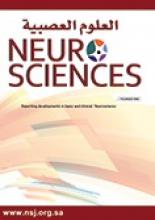Research ArticleOriginal Article
Open Access
Botulinum toxin type-A in the management of spastic equinovarus deformity after stroke
Comparison of 2 injection techniques
Ali H. Otom, Imad M. Al-Khawaja and Khalid W. Al-Quliti
Neurosciences Journal July 2014, 19 (3) 199-202;
Ali H. Otom
From the Department of Rehabilitation Medicine, Royal Jordanian Rehabilitation Center (Otom), King Hussain Medical City, Amman, Jordan, and the Department of Medicine, Faculty of Medicine (Al-Khawaja, Al-Quliti), Taibah University, Al-Madinah Al-Monawwarah, Kingdom of Saudi Arabia
MDImad M. Al-Khawaja
From the Department of Rehabilitation Medicine, Royal Jordanian Rehabilitation Center (Otom), King Hussain Medical City, Amman, Jordan, and the Department of Medicine, Faculty of Medicine (Al-Khawaja, Al-Quliti), Taibah University, Al-Madinah Al-Monawwarah, Kingdom of Saudi Arabia
MD, PhDKhalid W. Al-Quliti
From the Department of Rehabilitation Medicine, Royal Jordanian Rehabilitation Center (Otom), King Hussain Medical City, Amman, Jordan, and the Department of Medicine, Faculty of Medicine (Al-Khawaja, Al-Quliti), Taibah University, Al-Madinah Al-Monawwarah, Kingdom of Saudi Arabia
MD
References
- ↵
- World Health Organization
- ↵
- Sommerfeld DK,
- Eek EU,
- Svensson AK,
- Holmqvist LW,
- von Arbin MH
- ↵
- Ward AB
- ↵
- Daroff RB,
- Mazziotta JC
- ↵
- Dajpratham P,
- Kuptniratsaikul V,
- Kovindha A,
- Kuptniratsaikul PS,
- Dejnuntarat K
- ↵
- Gallichio JE
- ↵
- Ozcakir S,
- Sivrioglu K
- ↵
- Reichel G
- ↵
- Dobkin BH,
- Landau WM,
- Sahrmann S,
- Thomas Thach W,
- Simpson DM,
- Gracies JM,
- et al.
- ↵
- Richardson D,
- Sheean G,
- Werring D,
- Desai M,
- Edwards S,
- Greenwood R,
- et al.
- ↵
- Al-Shahrani AM
- ↵
- Sätilä H,
- Iisalo T,
- Pietikäinen T,
- Seppänen RL,
- Salo M,
- Koivikko M,
- et al.
- ↵
- Francisco GE,
- McGuire JR
- ↵
- Foley N,
- Murie-Fernandez M,
- Speechley M,
- Salter K,
- Sequeira K,
- Teasell R
- ↵
- Pittock SJ,
- Moore AP,
- Hardiman O,
- Ehler E,
- Kovac M,
- Bojakowski J,
- et al.
- ↵
- Rousseaux M,
- Compère S,
- Launay MJ,
- Kozlowski O
- ↵
- Isoyama H,
- Takeuchi N
- ↵
- Takekawa T,
- Kakuda W,
- Taguchi K,
- Ishikawa A,
- Sase Y,
- Abo M
- ↵
- Sheean G
- ↵
- Francis HP,
- Wade DT,
- Turner-Stokes L,
- Kingswell RS,
- Dott CS,
- Coxon EA
- ↵
- Fock J,
- Galea MP,
- Stillman BC,
- Rawicki B,
- Clark M
- Yaşar E,
- Tok F,
- Safaz I,
- Balaban B,
- Yilmaz B,
- Alaca R
- ↵
- Farina S,
- Migliorini C,
- Gandolfi M,
- Bertolasi L,
- Casarotto M,
- Manganotti P,
- et al.
In this issue
Botulinum toxin type-A in the management of spastic equinovarus deformity after stroke
Ali H. Otom, Imad M. Al-Khawaja, Khalid W. Al-Quliti
Neurosciences Journal Jul 2014, 19 (3) 199-202;
Jump to section
Related Articles
- No related articles found.
Cited By...
- No citing articles found.





